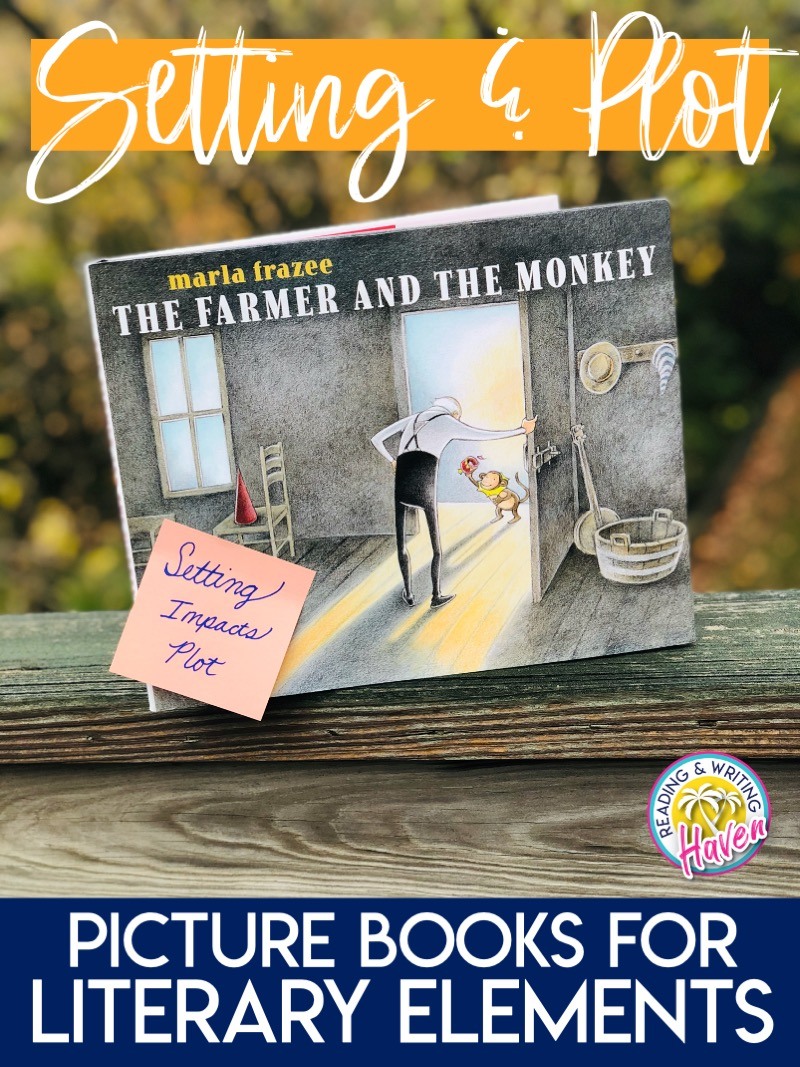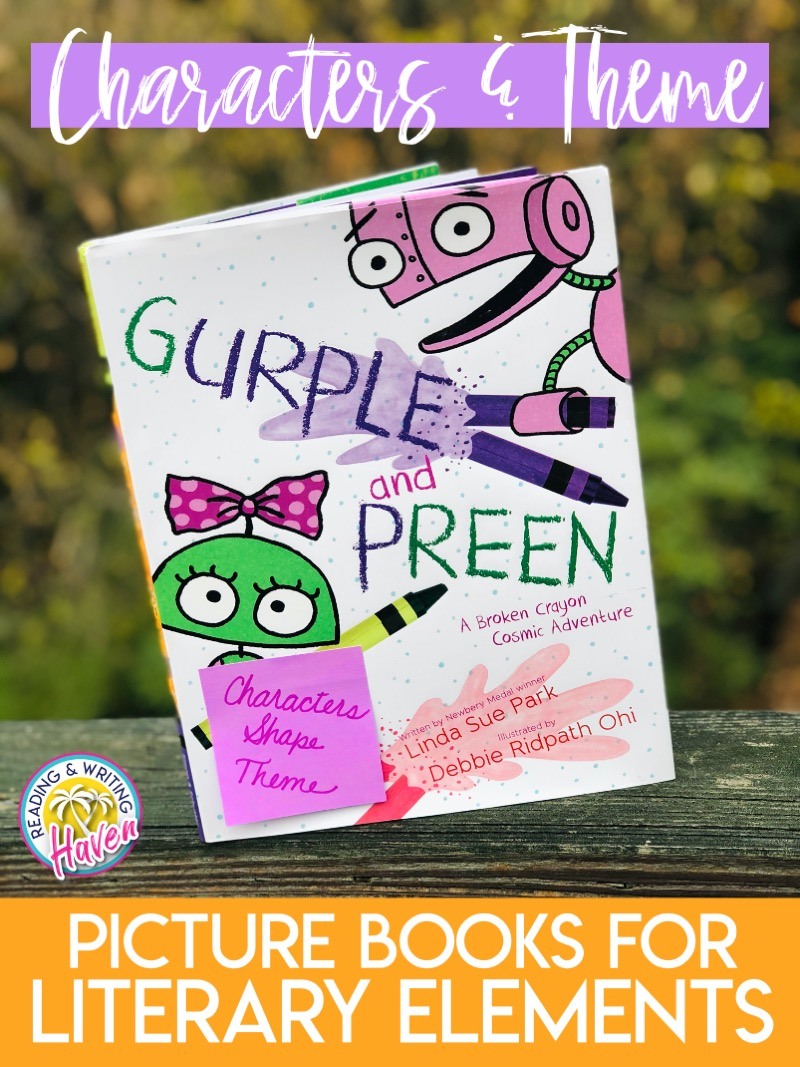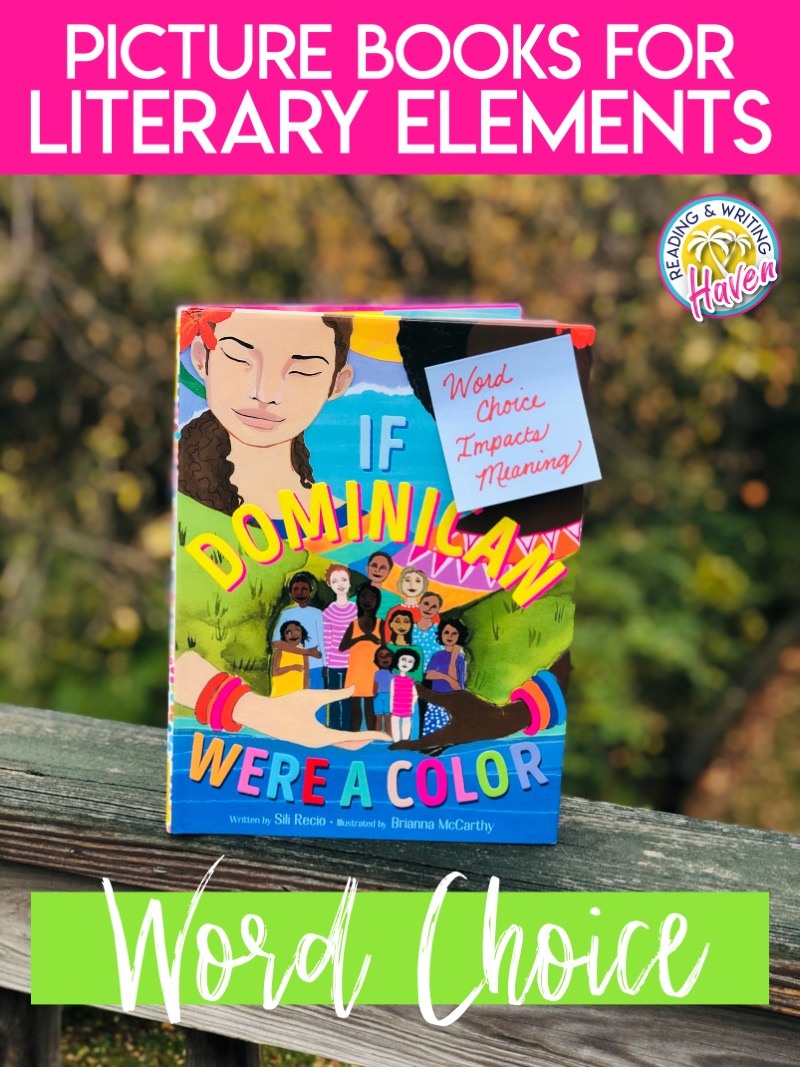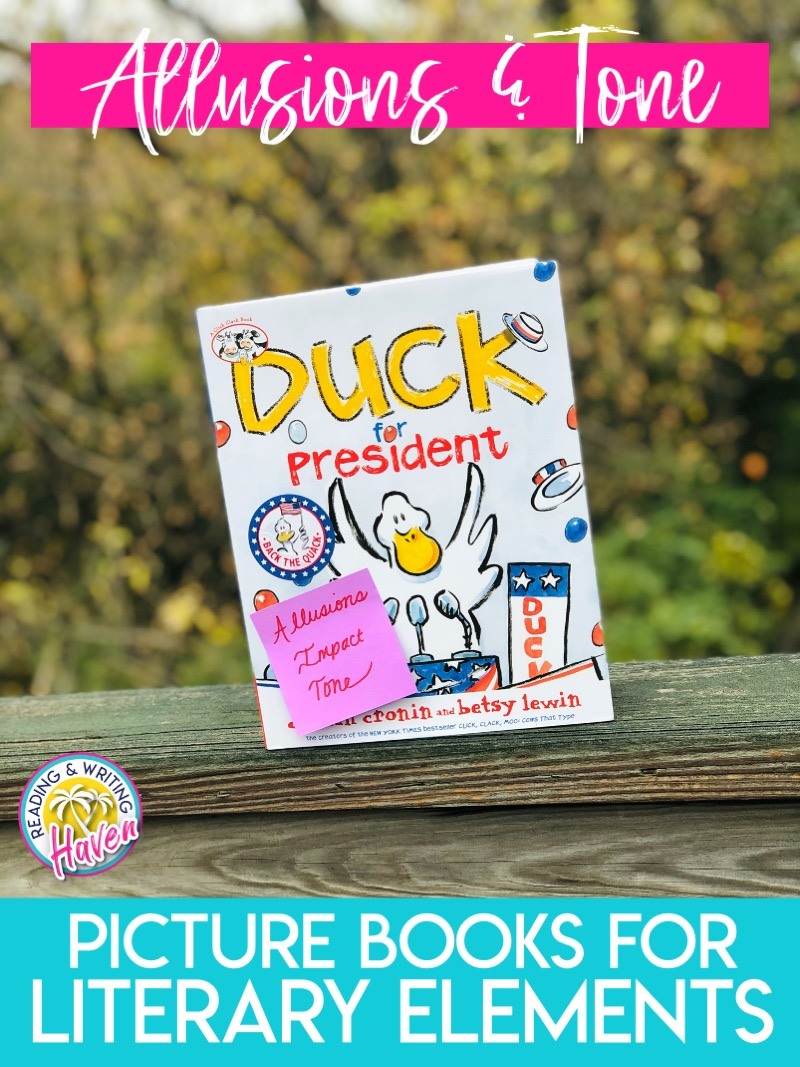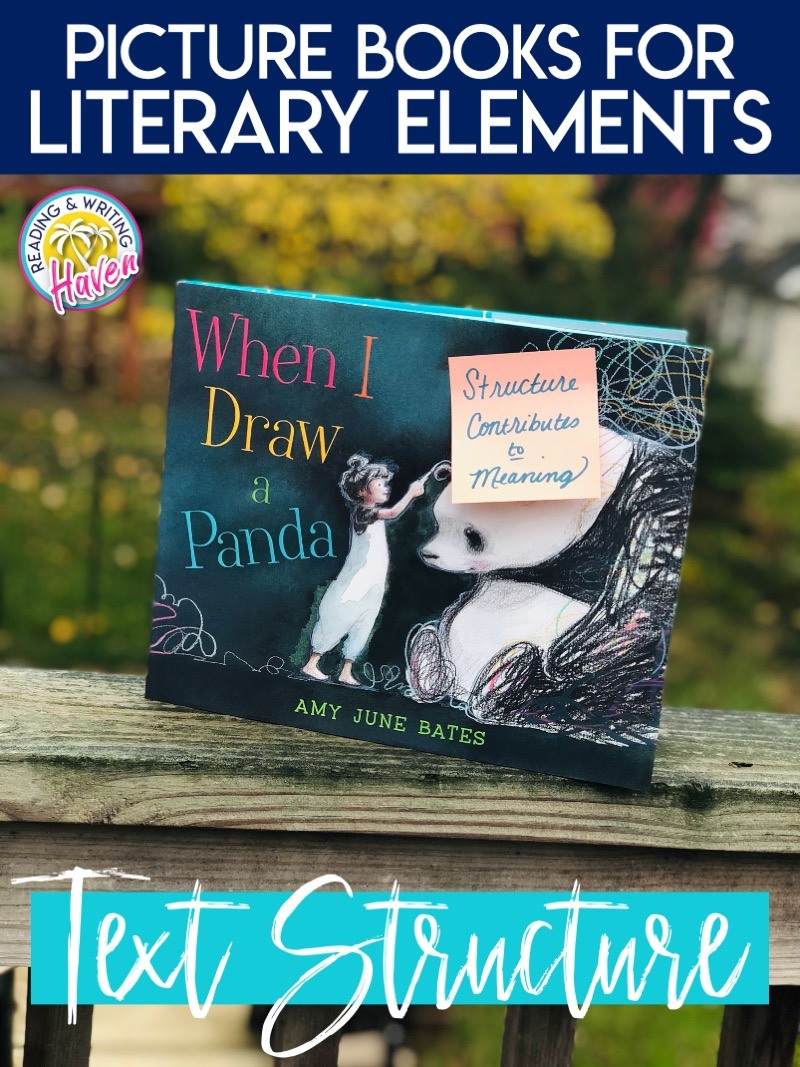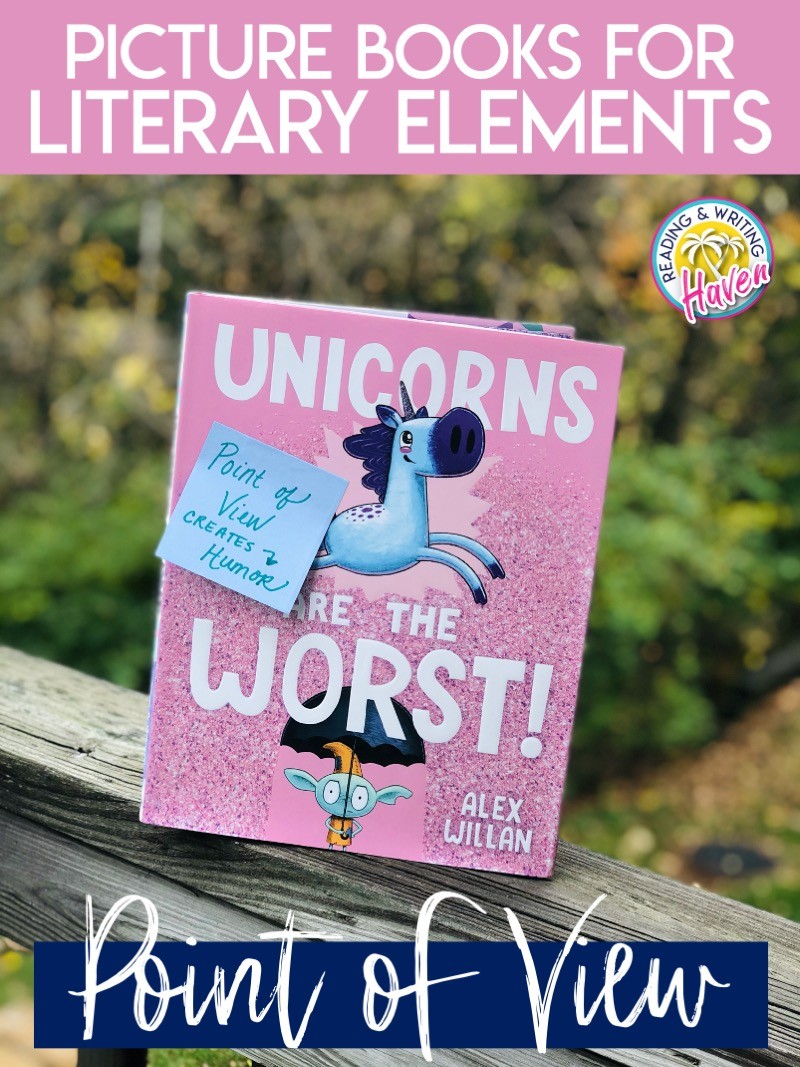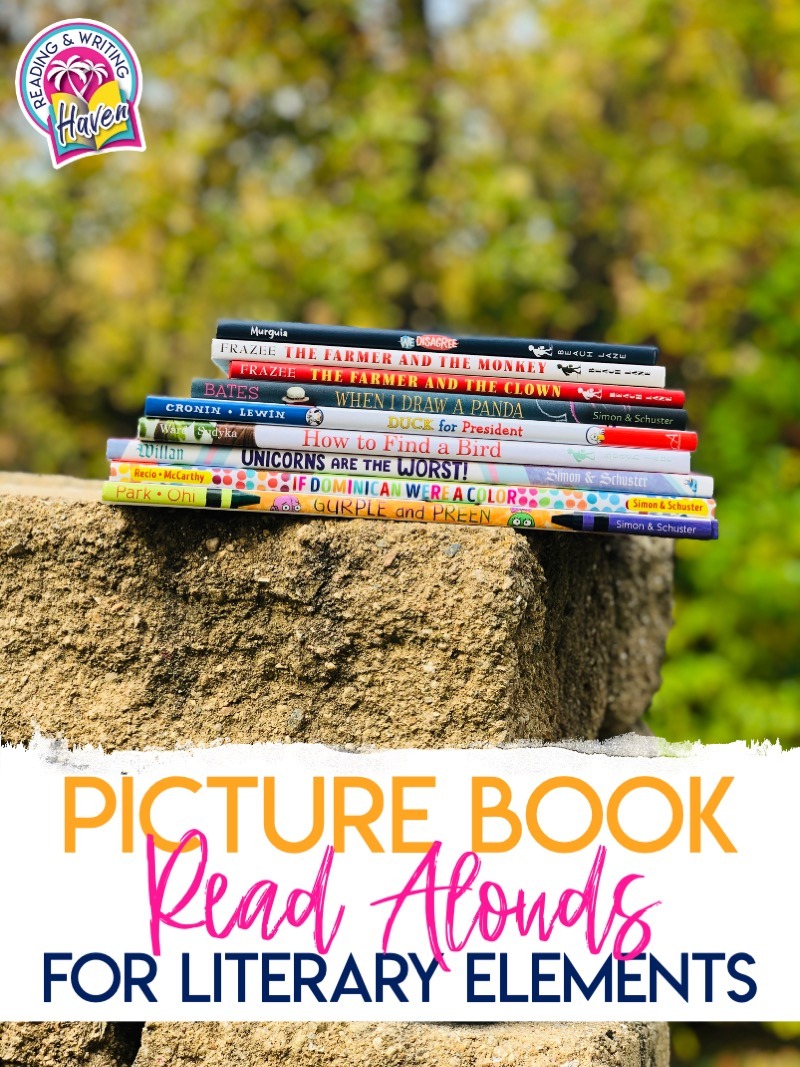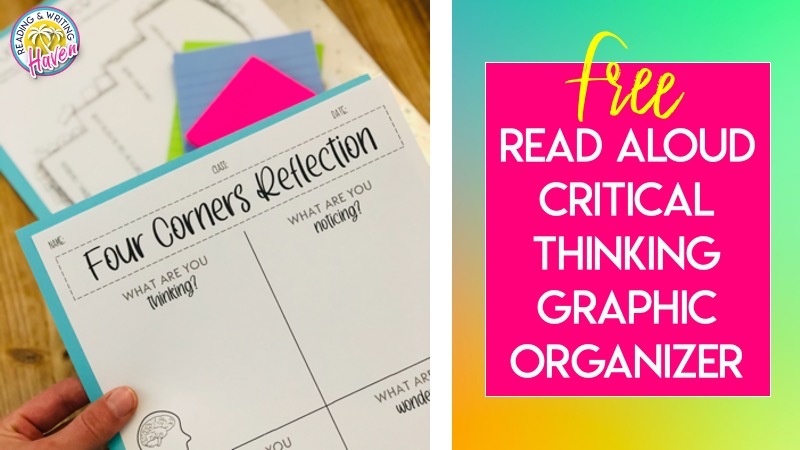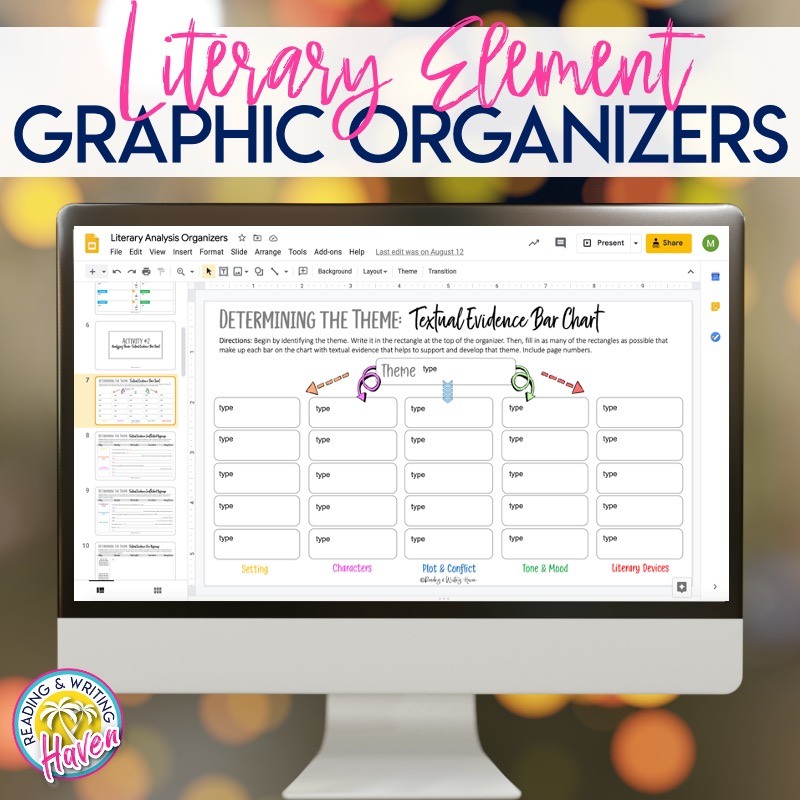Effective Read Alouds for Teaching Literary Elements
If you are a middle or high school teacher, and you’re not incorporating picture books in your curriculum, why not!? Creating mini lessons with short texts is one of the best ways we can introduce reading literature skills and concepts so that they will stick. Without a mentor text, it’s hard to create a mini lesson. Enter picture book read alouds for teaching literary elements!
If you want students to analyze how the…
- setting impacts the plot
- characters shape the theme
- word choice impacts meaning
- allusions to other texts impact the tone
- structure contributes to meaning and style
- point of view creates humor
…these picture books will be helpful. You can read them with students before or during a mini lesson and then refer back to them during guided and independent practice.
Let’s take a look at the books. At the end of the post, I’ll give a little bit more insight as to how to use these as interactive read alouds with secondary students.
Setting Impacts Plot
The Farmer and the Monkey by Marla Frazee is a wordless picture book about a lost monkey who unexpectedly follows a farmer home. The farmer lives – seemingly – in the middle of nowhere. But, the happy little monkey pokes around the house, peeks in windows, and knocks on the door until the farmer lets him in. In true monkey fashion, the little circus animal destroys the house in no time, and the farmer banishes him outside.
Soon, it begins to snow. Monkey is sad, homeless, and cold. The pitiful sight of the monkey neck deep, nearly frozen in snow causes the farmer to have a change of heart. Crying, the farmer picks him up, thaws him out, and proceeds to treat him like a beloved child until the night when the monkey finally finds his train again.
In this book, the setting (cold, snowy winter) impacts the plot. Had the monkey not frozen, the farmer’s heart probably would not have softened toward him. And, their beautiful friendship would not have blossomed.
Characters Shape the Theme
In Gurple and Preen by Linda Sue Park, the two characters (a purple and green robot) crash their spaceship. As the story progresses, Gurple and Preen act as dynamic foils, highlighting one another’s opposite reactions to the tragic opening event. While Gurple runs around frantically, yelling, breaking crayons, and having a generally pessimistic outlook, Preen is busy being productive. Silently, Preen uses all of the “rubbish” that Gurple discards to repair the ship.
As the two climb into their repaired rocket and take off at the end of the story, Gurple asks, “Where to next?” and Commander replies, “Everywhere. The whole galaxy. Star by star by star.” The differences between these two characters help to shape the theme: With a universe of creativity, anything is possible.
Word Choice Impacts Meaning
If Dominican Were a Color by Sili Recio is rich with vibrant vocabulary and figurative language.
If Dominican were a color…it would be the sunset in the sky, blazing red and burning bright. The shade of cinnamon in your cocoa, the drums beating so fast, they drive you loco.
The description in this book brings Hispaniola to life. Why does the author choose the word blazing to describe the redness? Why is Dominican the sunset in the sky? What do these colors symbolize? What images do they evoke?
We can have rich conversations with students about purposeful word choice and intentional imagery as an author. How would these lines read differently if the author had used the adjective bright red instead of burning red? The connotation and denotation change, which alters the meaning and mood of the passage.
Allusions Impact Tone
If you’re looking for a humorous book, Duck for President by Doreen Cronin and Betsy Lewin is highly entertaining. In this story, Duck is a humble farm animal who works his way to the top of the political food chain only to realize he’d rather just be a duck on a farm.
In addition to personification, the book includes political-style allusions. For example, Duck appears on a late night television show. And, readers will encounter references to famous speeches and slogans (for instance, “A Duck for Change” and “Duck, Making Us Proud Again” can be connected to recent presidential slogans). Also, in his autobiography, Duck writes the following…
Four score and seven years ago (Lincoln’s Gettysburg address)
The only thing we have to fear (Franklin Roosevelt)
Ask not what your country (John F. Kennedy)
Running a farm is very hard work.
Clearly, these allusions impact the piece by working in tandem with Duck’s unique personality and the personification to create a comedic, light-hearted tone.
Structure Contributes to Meaning
I adore the book When I Draw a Panda by Amy June Bates. The front pages of the book include step-by-step directions for how to draw a variety of animals and images “perfectly.” These same images frame the end of the book, but the perfect step-by-step instructions are scribbled all over, symbolizing that there is no one right way to draw. The entire book is threaded with the message that creativity and an independent spirit are to be celebrated.
The way the author structures the lines in this book, including the title, is perfectly askew. Lines are not arranged linearly. For example, one of the first pages reads, “Sometimes when they say / to draw a perfect circle, / mine turns out … a little wonky.” The words “a little wonky” are situated diagonally on the page…just enough to be unique and independent.
Some of the words are larger than others, and each page pops with abstract art, perfectly imperfect illustrations, and a panda that comes to life.
Point of View Creates Humor
Unicorns are the Worst by Alex Willan may sound like a book older students wouldn’t enjoy, but it’s really for all ages. The goblin who narrates the story has such a begrudging, biased perspective of unicorns. His stereotyping and close-mindedness manifests in bitter comments, misconceptions, and missed opportunities to make new friends.
As the story progresses, readers can infer that the little goblin has probably formed some of these misled opinions after feeling slighted. For example, he complains, “I have studied forgotten magic, know spells that can transform socks into slugs, can turn broccoli into ice cream, and have mastered the three-strand braid. But despite all of this, does anyone ever ask to have a Goblin-themed birthday party?” and “It’s not like they ever ask me to one of their tea parties.”
The protagonist is the narrator of the story, and his humorous quips and misguided opinions create a point of view that leaves readers giggling, especially when we realize he is friends with the unicorns at the end of the book, only to begin the cycle of bitterness and jealousy with a new animal – the dragon!
Tips for Interactive Read Alouds in Secondary
To share these stories with your classes, it can be powerful to read them aloud together. Whether you are in person or teaching remotely, all students enjoy interactive read alouds.
If your middle and high school students are not used to read alouds, you may wish to frame their value. We read books aloud because they open up thinking and discussion. Read alouds create opportunities for empathy and a broader understanding of the world. Plus, there are entry points for discussing pretty much any literary standard under the sun in an organic, authentic way. Read alouds also help to create a relaxing, warm classroom community.
As you read a picture book with older students, pause on key pages (plan these stops in advance and mark them with sticky notes, if necessary), and pose natural questions.
What are you…thinking? noticing? feeling? wondering?
Entertain all ideas, and praise students for sharing their thinking. These questions create a dynamic, interactive element to the read-aloud experience. (Grab a free download by clicking on the image below!)
By including picture book read alouds in our secondary curriculums, we will create a bank of rich mentor texts we can refer back to throughout the year as we teach a variety of skills and standards with more complex texts.
Further Reading:
RELATED RESOURCE
Scaffold literary element analysis with these digital and print graphic organizers for any text.
